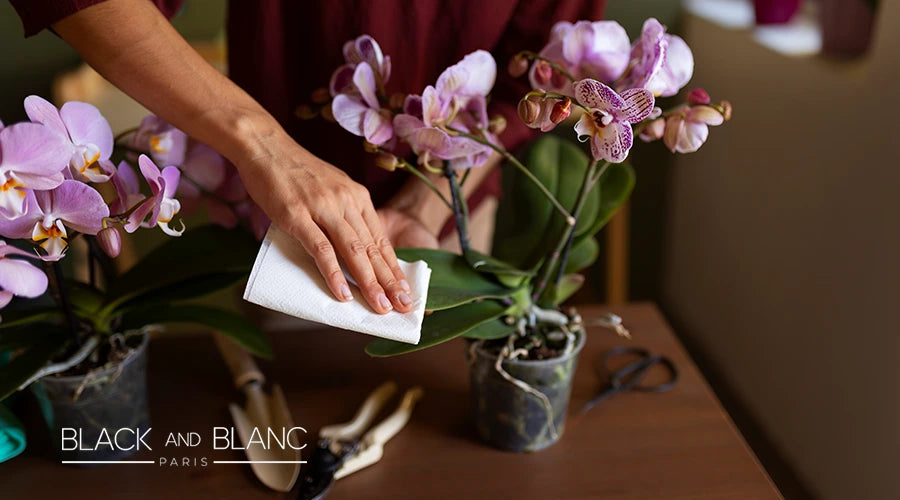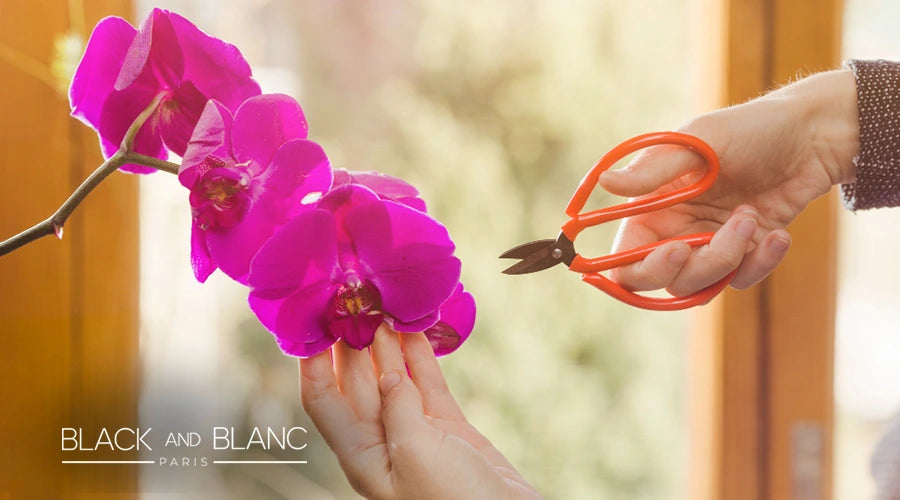You'll know how special orchids are if you have one in your home. They come in many colors and have different shapes for their petals. They are tricky to keep healthy, but they make any room fancy. An orchid requires a different kind of attention than a standard houseplant. This article will teach you about orchid care, so don't worry.
Why Orchids Are So Special
Orchids are also known to be exotic in beauty and have rich backgrounds. Orchids have reigned for centuries with their blooms.
Orchids Symbolize Love and Luxury
People have long been fascinated by orchids throughout history. There is something special about their beauty. They are also meaningful because of their history. It was said in ancient Greece that orchid roots made a woman give birth to a boy or a girl.
During the Victorian era, orchids were displayed as a symbol of wealth. Symbolizing romance, elegance, and luxury, orchids now symbolize more than just flowers. In any space, they add a touch of sophistication, making them a delightful gift for special occasions.
So Many Different Orchids
There are lots of different types of orchids. Scientists have found that over 30,000 kinds of orchids grow naturally in nature. Plant experts have also combined natural orchids to make over 100,000 new hybrid orchids. Each orchid looks different from the others.
They come in many colors, like white, pink, purple, and yellow. Their shapes and patterns are not the same either. Some have one single flower. Others have many small flowers grouped together. A few even smell sweet, like roses.
The Step-by-Step Guide to Orchid Flower Care

Maintaining beautiful orchid blooms takes a little effort, but following a few key steps makes it easy. Here's a simple guide to keeping your orchids healthy and gorgeous.
#1 Watering: The Goldilocks Principle
Orchids need the right amount of water. Too much can rot the roots. Too little causes wilting. Check if the potting mix is dry by touching it. If so, it's time to water for most orchids about once a week. Adjust as needed. Use warm, not cold water. Always let extra drain out after watering. Don't let pots sit in water trays, or root rot can develop. For sensitive orchids, use rain or purified water. The goal is to hydrate without over-soaking.
#2 Light: Bright but Not Too Bright
Orchids need bright light to grow well. But too much sun can damage their soft petals and leaves. Indirect light works best. An east or west window is a great spot. Figure out what works for each variety. Overcast days may need an extra lamp. With the right amount and placement of lighting, any orchid can thrive.
#3 Temperature and Humidity
Orchids thrive in places that don't get too hot or cold, most like temperatures between 65 and 85 degrees. They don't want chilly drafts that could make them sick. It's also important for the air around orchids to be humid. Between 40-70% moisture helps them stay healthy. Dry spots cause their delicate blooms and leaves to dry out.
#4 Potting Mix and Repotting
Orchid roots need soil that drains well but still stays moist. Bark pieces, moss, or tiny rocks called perlite work great. These let water and air move around the roots. It's time for a pot change every 1-2 years. The old soil breaks down over time. Repotting in a fresh mix perks up tired roots. Drainage holes are key, too. And don't go too big with the new pot - orchids prefer to be a bit snug.
#5 Fertilizing
Just like every other type of plant in the household, orchids do need nutrients. They should get only a gentle, balanced fertilizer specially made for orchids. When feeding orchids, always follow the instructions carefully. Apply the fertilizer at half strength or one-quarter strength. No fertilization is required through the winter months when the plant is dormant.
#6 Getting Your Orchid to Bloom Again
When your orchid stops flowering, you will want it to start again soon. To encourage reblooming, follow these steps:
- After all the flowers have fallen off, cut the stem back right above one of the bumpy nodes or joints. This will inform the plant that it should begin growing a new flowering stem.
- Continue to water and feed the orchid, and provide the correct light, warmth, and humidity.
- Be patient! New flower buds will start to grow and open after some months, but the timing can vary for different orchids. So, don't be surprised if the orchid takes a little while.
If you care for it properly, it will store the energy in preparation for a beautiful new cycle of blooms. It will all be worth it when those exotic flowers pop up again!
Caring for Orchids After Flowering

Once the flowers have faded, it's time to prepare your orchid for its next display. Follow these simple steps:
Once the flowers have faded, it's time to prepare your orchid for its next display. To do this, remove any spent blooms by cutting the stem above where it meets the main plant. This directs energy back into new growth. Be careful not to damage the main plant or any new buds forming on the stem.
If more than a year has passed, consider repotting. Carefully remove it from its plastic pot and replant it in an orchid bark mixture for breathability.
Waterless, but don't dry out. The amount of water can decrease slightly during its dormant phase.
Keep conditions bright and tropical. Place in indirect sunlight and maintain warm temperatures and humidity.
This rest period allows your orchid to regroup its strength. Be attentive but not overly fussy. A new flower spike will emerge to reward your consistency in a few months. With a few minor changes, you'll encourage many more cycles of beautiful blooming for years to come. Focus on its basic needs, and your orchid will continue to delight.
The Perfect Indoor Home for Your Orchid
Choose a bright room that gets lots of filtered sun. An east or west-facing window is ideal. Make sure it also has good airflow.
Up the humidity. Place the pot on a pebble tray filled with water, allowing evaporation to mimic its natural rainforest climate. You can also use a humidifier.
Steer clear of drafts and extreme temperature shifts. Orchids prefer stable, warm conditions without cold breezes blowing directly on them. Too many hot and cold changes can stress the plant.
Provide decent air circulation so the orchid doesn't endure stagnant conditions. But protect it from any fans or vents blowing streams of air overhead.
With the right location offering bright light, humidity, steady temperatures, and gentle airflow, your orchid will thrive indoors much like it would in the tropics. With some tweaking, you can give it the ideal home it needs.
Different Types of Orchids and Their Care
Orchids come in thousands of species, and each one will come under different instructions. Most types of orchids will share some basic needs in common, but a few others might take some special care. Here are a few popular types:
- Moth Orchids like warm temperatures of 65-75°F and high humidity. Water when the soil is nearly dry.
- Cane Orchids need a winter rest period with less water. Cooler 55°F temperatures during this time help them rebloom later.
- Corsage Orchids thrive in bright light and 65-80°F warmth. Let the soil nearly dry out between waterings. Good airflow is essential.
- Boat Orchids prefer cooler 50-60°F nights. Give them lots of light and water when half the soil is dry.
There are many more orchid varieties with unique traits and care needs. Research your specific type of orchid to learn its ideal environment.
Troubleshooting Common Orchid Issues
Several problems can arise with growing orchids despite all possible precautions.Here are the common ones:
Wilting Flowers or Shriveled Leaves
If any of the bottom flowers are turning yellow, this usually means your orchid requires more water or that the environment in the air is generally more humid. Water more frequently and mist the leaves periodically. A humidifier or a shallow tray of water and pebbles are helpful, too.
Yellowing Leaves
Yellow leaves can mean you are watering too much, too little, or not giving the plant enough light. Gently check if the roots are watery and rotten from overwatering. Adjust your watering and move your orchid.
Bud Drop
However, if the buds keep falling one after another even before they open, it can be because of significant changes in temperature, humidity, or draft. Orchids do not tolerate fluctuations in their surroundings, so kindly maintain them as stable as possible.
Pests or Diseases
If you do, look at your orchid carefully for bugs such as aphids or mealybugs. Look also for mold or fungus, things that orchids are susceptible to. There are even safe insecticide and fungicide sprays made for orchids.
The Journey of Orchid Care
They may look complicated at first, but don't let them discourage you, for under your care, they'll thrive for years. Follow this guide's explicit instructions for light, water, humidity, and more. Provide what your orchid needs and it will flourish healthily.
Patience is vital - orchids need close monitoring. But oh, the satisfaction when those elegant blooms emerge! Few houseplants rival an orchid's sleek display.
Frequently Asked Questions
How Often Should I Water My Orchid?
Most of the orchids could be watered about once a week. The best guide for this is the feeling of the potting media. Water whenever the top inch dries. Drain off all excess water after 30 minutes so the roots do not retain moisture.
What Kind of Light is Best for Orchids?
The orchids will thrive with all the bright, indirect light they can get. Exposure to either an east or west window will be good, but never direct sun rays because it will scorch the foliage or the blooms. If windows don't suffice, grow lamps should be used for up to 12 hours daily. Turn the plants around every week so that no side is exposed to light more than the other.
Why did some of my orchid flowers drop early?
Orchid blooms falling off before turning brown means the plant was stressed. Common causes are drying out too much between waterings, getting blasted by hot air vents, or being in a draft. Giving it a calm environment with consistent care helps orchids keep blooming strong.














